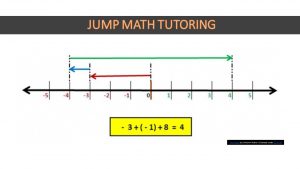WHAT IS MATH TUTORING (JUMP MATH PROGRAM)?
JUMP Math is dedicated to helping children succeed at, and enjoy, learning math. There is a strong causal link between a child’s academic success and his or her future contribution to society. We strive to increase children’s chances of success, to reduce socio-economic disparities, to engender a sense of belonging and, most importantly, to endow voiceless children with opportunity.

There are several core beliefs at the foundation of the JUMP Math philosophy:
- New intellectual abilities can emerge suddenly in even the most challenged student from a series of small advances, just as a chemical solution can change colour with the addition of a single drop of reagent. More than any other subject, math is a tool for adding, in a methodical and effective way, the drops of knowledge that will transform a student.
- This non-linear potential can only be nurtured if students are confident and attentive. Teachers must pay attention to the psychology of the classroom to make sure that everyone is included, involved and participating, and supported with responsive instruction, praise and encouragement. Children who don’t believe they can succeed will never do so. The JUMP Math approach starts with a confidence building exercise that has demonstrably changed children’s perceptions of their abilities.
- By adopting the methods and principles of JUMP Math, schools can teach mathematics to a higher standard, without leaving students behind, and in a cost-effective manner.
- There will always be differences between students, but we don’t need to exaggerate or highlight them by setting up unnecessary hierarchies. By using materials and methods that minimize differences, teachers can cover more of the curriculum and can narrow or close the wide gap in student performance that exists in most classrooms.
- Teachers will only succeed in helping all levels of student when they know how to determine what their students know, how to reduce concepts into the most basic elements of perception and understanding, and how to extend ideas in a way that is engaging while taking into account the student’s readiness to move forward.
